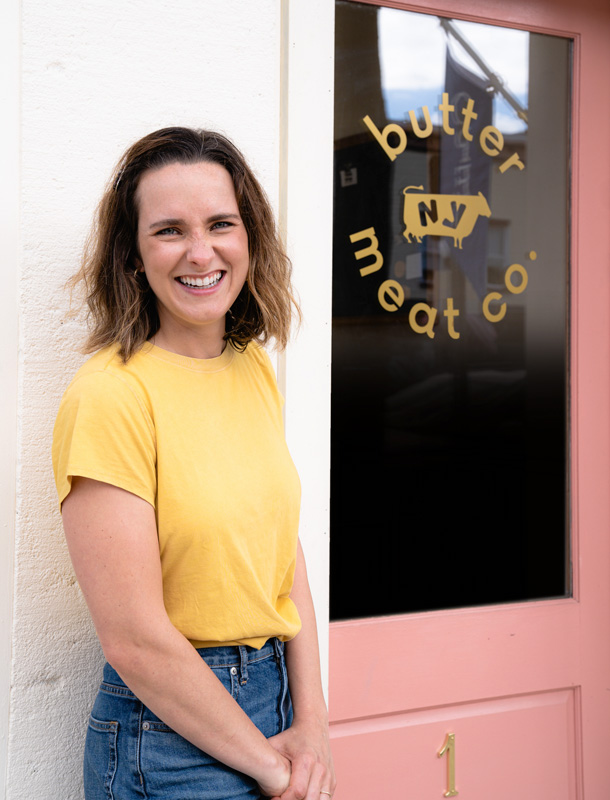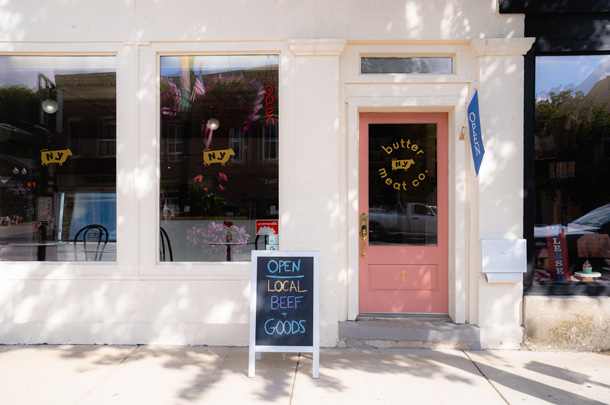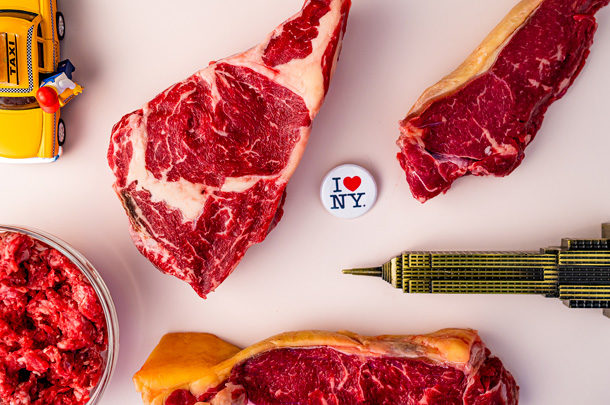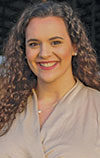When most people think of high-quality flavorful beef, meat derived from cull cows is not what first comes to mind. However, Jill Gould, owner of Butter Meat Co., a beef supply chain startup in western New York, is changing misconceptions and proving that the value of dairy cows doesn’t end even after retiring from the milking herd.
Before starting her own mature beef business, Gould grew up on a dairy and vegetable farm in western New York, which led her to pursue an education and career in the area of food production and distribution. “I wasn’t really sure what I wanted to do, but I knew I loved agriculture,” Gould says.
After graduating college, Gould worked in various areas of the food supply chain with multiple large companies, including Sam’s Club, Walmart and Blue Apron. Her role as a sourcing manager at Walmart provided insight and knowledge in areas of food production, consumer tastes and preferences, and business profitability. “I became an expert in nuances of different crops with how they were harvested, how their harvesting would change merchandising in the Walmart stores, costs, and then put together a pitch of my alignment,” Gould says.
Her experience at Walmart, combined with her background in the dairy industry, is what led her to see the potential in dual-purpose beef and eventually leave the corporate business setting. “I’ve always had an entrepreneurial itch, so during that time, I went back to my family’s farm for a little while,” she says.
While working on her family’s farm, Gould did some research and found that dairy cull cow meat is not only been undervalued but also underutilized. “We’ve gotten so efficient at making milk but with that comes managing your heifer quantities and breeding programs in different ways,” Gould says. “You’re seeing more cows being bred back to beef genetics, and you’re seeing this rise and growth in the beef segment, and it’s not being marketed to customers.”
 Jill Gould, owner of Butter Meat Co., grew up in the agriculture industry and worked at large food supply chains before starting her dual-purpose beef business in 2019. Photo courtesy of Brandmint.
Jill Gould, owner of Butter Meat Co., grew up in the agriculture industry and worked at large food supply chains before starting her dual-purpose beef business in 2019. Photo courtesy of Brandmint.
After gaining more knowledge into the meat industry through Suny Cobleskill’s USDA slaughter processing program, Gould decided to take a chance and establish Butter Meat Co. in 2019 and later open a storefront in February 2020. Today, Butter Meat Co. sells a variety of different beef products all obtained from mature cows, including all-beef hotdogs, summer sausage, brisket, beef bones and cross-cut shanks. However, their best-selling products are ground beef, tenderloins, Delmonico steaks and New York strip steaks. “I try to do cuts that people will be successful cooking and happy enjoying,” she says.
Unlike many businesses that opened during the pandemic, starting up shop amid COVID-19 resulted in great success because of the meat shortages all throughout the country, and because she was able to focus on curbside pickup and online orders, Gould says.
The purchasing of the mature dairy cows is a substantial expense for Gould, so she also produces and sells additional value-added products, such as soap and liver dog treats, and she plans to implement other products that utilize all parts of the dairy cow. “I’m really focused on how I increase my yield from live animals because I purchase the live animals from the farm, so I’m incentivized to find every way [to use the product],” Gould says.
After being in business for a little over a year, Gould has discovered two market audiences interested in mature beef. “Food explorers” are considered her early adopters, or those who have heard of mature beef and are eager to try it. Many times, these individuals have seen dual-purpose beef being used by top chefs on cooking shows and Netflix.
Butter Meat Co. also has customers who are more concerned with the environmental side of things, thus making the idea of dual-purpose meat a full-circle holistic approach that satisfies the economy and environment, Gould says. “Dairy and livestock [farmers] take a lot of heat, and as we look into the future in becoming carbon positive and being leaders, dual-purpose genetics are a way to do that.”
She adds, there is also a stigma surrounding the quality of dual-purpose beef because of the reputation it has generated over the years. “Twenty percent of our beef in the U.S. already comes from dairy breeds,” she says. “If you asked most people, they wouldn’t say that, and even most dairy farmers would be surprised by that number.”
 Butter Meat Co., based in western New York, opened shop in February 2020 and serves an array of audiences interested in trying mature beef. Photo courtesy of Brandmint.
Butter Meat Co., based in western New York, opened shop in February 2020 and serves an array of audiences interested in trying mature beef. Photo courtesy of Brandmint.
When Gould first started Butter Meat Co.’s brand, she wanted her business to have a transparent and approachable tone, so customers could feel they had an option as to the breed and type of meat they were purchasing, while also being able to ask questions about the dairy industry, she says.
“There’s a lot of people and companies that are trying to tell farmers what to do and how to do it,” she says. “But Butter Meat Co. is trying to take a product that is already produced that is being undervalued and create more value for the farmer and the customer.”
As her business grows and becomes a popular spot for visitors of New York’s Genesee Valley, Gould hopes to grow her business by implementing dairy steers into the production process. “I want to be an up-and-coming beef brand that’s sourcing from dairy farms and creating more value in the supply chain,” she says. “I want to scale this brand to more farms and more customers.”
The production of dual-purpose beef is something she sees as having potential for dairy farmers to merge the gap between the industry and consumers. “This is a growing segment on forums, yet no one is really marketing [it] or telling this story,” she says. “I’d love to see more people doing it or talking about it because I think it’s a way to connect people back to dairy farming and the dairy industry.”







